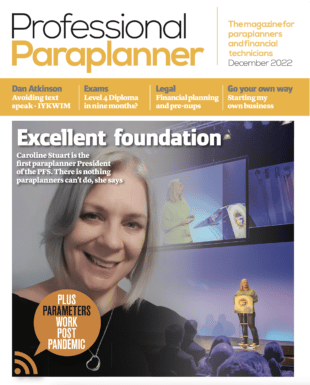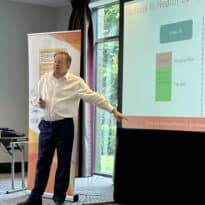The number of households on track for a moderate retirement has dropped over the past six months, new analysis from Hargreaves Lansdown has revealed.
The percentage has fallen to 36.4%, down from 38% six months ago, according to Hargreaves Lansdown’s Savings and Resilience Barometer. The data found the average household is now £31,546 short in their savings of the amount needed to give them a moderate standard of living in retirement.
Helen Morrissey, head of retirement analysis at Hargreaves Lansdown, said: “Retirement resilience has dropped from 38% just six months ago to 36% with middle to low-income households hardest hit. This is due to rising inflation boosting the amount of money needed for a moderate retirement with the pension gap opening up to £31,546; four times more than it was in 2019. Added to this the cost-of-living crisis has had a bruising impact on our finances which many households are still grappling with.”
There are stark regional differences, the data showed, with the most resilient area Wokingham in the South-East reporting a gap of just £265. In contrast, Leicester has a median pension gap of £59,762. Eight of the top 10 local authorities with the largest pension gap are all in London, with Brent, Enfield, Barking & Dagenham and Newham all reporting a gap of £75,203.
Morrissey said efforts to reduce lost pensions and the proliferation of small pots will help ensure pension savings do not go astray.
“The ability to choose the pension provider that you want your contributions to be paid to throughout your career could really boost people’s retirement planning. It would be far less likely to be lost as you change jobs and gives people an overarching view of what they have which can aid better decision making. The Lifetime Pension could do much to reduce complexity for the member while ensuring providers give better value,” said Morrissey.
While increasing the auto-enrolment minimum contribution beyond the current 8% has been touted as an option, Morrissey said it should not be implemented without consideration of the impact it would have on people’s short-term financial resilience. As an alternative, Morrissey said the potential to receive a higher employer contribution if an employee increases their own would provide an incentive for those with the money to spare without forcing those who don’t have the money to boost contributions to a level they can’t afford.
Morrissey said the retirement needs of the self-employed should also not be forgotten, with the Lifetime ISA offering benefits for this cohort.
“We are concerned by recent reports that the government is considering the future of the Lifetime ISA. This is a product that could play a major part in boosting the retirement resilience of this group who may need a more flexible solution than a pension. The ability to access your money in times of need, albeit subject to an exit penalty, makes the LISA a compelling prospect for this group. Moves to reduce the exit penalty from 25 to 20% and widening the age criteria to enable a LISA to be opened by older workers could make it more useful still,” she added.
Main image: brett-jordan-ulqQgJRGVNc-unsplash































